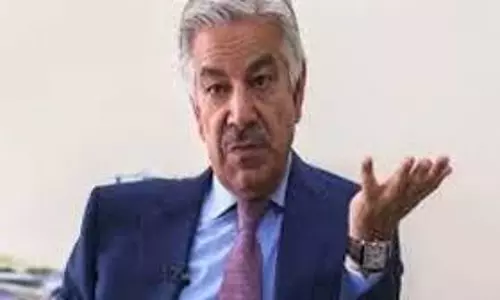
Adequate statutory mechanism exists for media to follow: Centre tells Bombay HC
text_fieldsMumbai: Submitting that there exists adequate statutory as well as self-regulatory mechanism for the media to follow, the Union government on Friday told the Bombay High Court that there was no void in the existing legal framework on regulating the content broadcast by the electronic media.
The submission was made in context of recent reportage on the death of actor Sushant Singh Rajput and PILs calling for restrain on media coverage of the high-profile case.
Appearing for the Centre, Additional Solicitor General (ASG) Anil Singh told a bench that there existed adequate statutory as well as self-regulatory mechanism for the media, including TV news channels, to follow while printing or broadcasting any news items.
The ASG was responding to previous queries posed by the bench of Chief Justice Dipankar Datta and Justice GS Kulkarni while hearing a bunch of PILs seeking that the press, particularly television news channels, be restrained in their reportage on the death of Rajput.
The PILs, filed through senior counsel Aspi Chinoy, by activists, private citizens and a group of retired police officers, had also sought that TV news channels be stopped from conducting a media trial into the case.
Last month, the bench had asked the Union government if there existed any statutory mechanism to regulate the content broadcast by the electronic media akin to the regulatory mechanism exercised by the Press Council of India for the print media.
The bench had also asked at the time if there existed any vacuum in law on the issue, and had asked the Union government to clarify if the high court had the jurisdiction to frame guidelines for the same.
On Friday, Singh said while the HC had the requisite jurisdiction, there was no need for any new statutory mechanism or guidelines to be framed for the electronic media.
He said besides the statutory mechanisms that included the guidelines of the Programme Code of the Cable TV Network Act, an aggrieved party also had the option of invoking the court's intervention through the law of defamation, or the Contempt of Courts Act.
"There is statutory and self-regulatory mechanism in place. The Programme Code specifically states that transmission is allowed only if it confers with the code," Singh said.
"I am submitting that on the point of guidelines, there is already a mechanism in place," the ASG said.
He said that while the court could exercise its jurisdiction to frame new guidelines, the trouble would be in implementing such rules.
Singh added that the Contempt of Courts Act could be invoked in a case in pre-trial stage, too.
He said that prejudicial media reporting at the stage of investigation could amount to contempt of court if it interfered with the administration of justice.
"It (the Contempt of Courts Act) can be invoked from the time that an FIR is registered and trial becomes imminent," Singh said.
"This is the view taken by the supreme court," he said.
"Today this high court frames guidelines, tomorrow, if another high court frames guidelines, and then another one does too, how will the guidelines be implemented?" Singh said.
Senior advocate Arvind Datar, who appeared for the National Broadcasters Standards Authority (NBSA), an independent body set up by the National Broadcasters Association to look into complaints, said there was no shortage of regulatory framework at present.
Datar assured the court that the NBSA would soon come out with guidelines on media reportage on a case after registration of an FIR.
On previous hearings, private TV news channels, that are a party to the case, had argued that the self-regulatory mechanism was adequate and that no new mechanism or guidelines were required to control the media.
On Friday, the HC closed all arguments in the case and reserved its verdict.






















